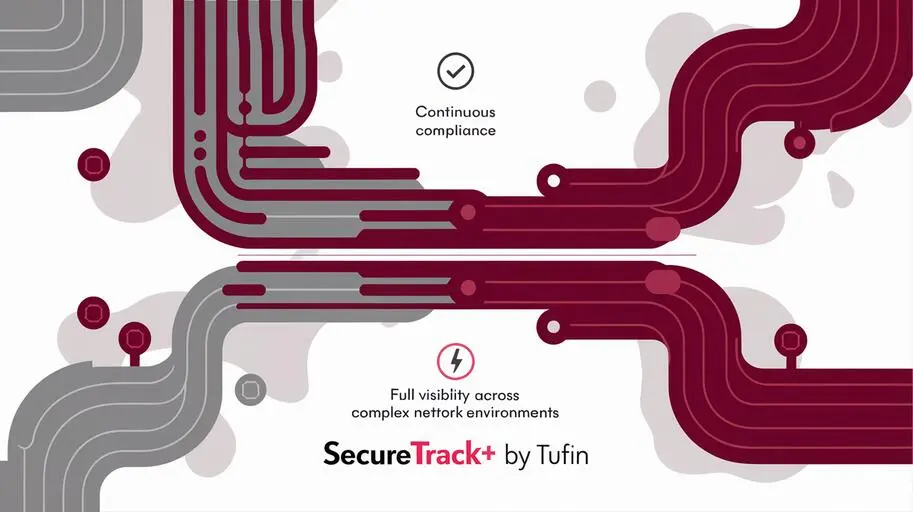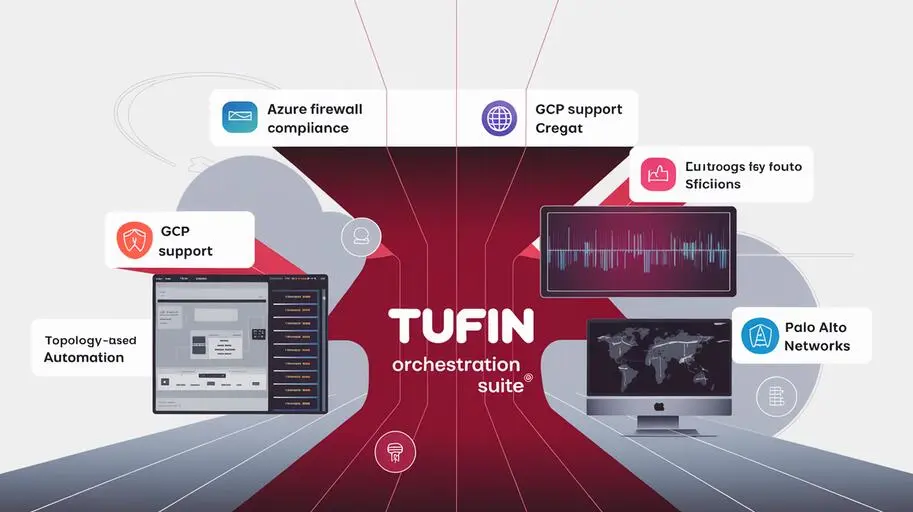In today’s business environment, where speed and flexibility define success, delays in making changes to the network infrastructure can cost a company dearly. Network Change Automation, especially with solutions like the Tufin Orchestration Suite, solves this problem by significantly accelerating processes, reducing risks, and unlocking new opportunities for growth.
Reducing Time to Network Changes: A Strategic Advantage for Executives
In the dynamic world of business, where digital transformation is becoming inevitable and Agile infrastructure is the standard, the ability to quickly and safely make changes to the network infrastructure is a critical competitive advantage. Executives often face the problem: making necessary changes to the network takes too long, is costly, and involves the risk of errors. This slows down the introduction of new products to the market, limits business flexibility, and increases the likelihood of security problems.
What is Network Change Automation?
Network Change Automation (NCA) is a technology that automates and accelerates the process of making changes to the network infrastructure. Instead of manually performing each task, NCA uses predefined rules, policies, and workflows to automatically configure network devices, apply security policies, and verify compliance. This significantly reduces the time required to make changes, increases accuracy, and minimizes the risk of errors. NCA is closely related to network security management, ensuring automatic application of necessary security measures with each change.
The Business Value of Reducing Time to Network Changes
Accelerating the Launch of New Products and Services
Time is money. Reducing time to network changes directly impacts the speed of launching new products and services. By automating processes, companies can adapt their network infrastructure to new requirements faster, reducing development and deployment cycle times.
Increasing Business Agility and Adaptability
The market is changing rapidly, and companies must be prepared to respond to these changes. Automation allows companies to quickly adapt their network infrastructure to new requirements, whether it’s the adoption of new technologies, geographic expansion, or a change in business model. This provides a competitive advantage and allows for a faster response to customer requests.
Optimizing Costs and Resources
Manually making changes to the network is a time-consuming and expensive process. Automation reduces labor costs, reduces the risk of errors and network downtime, thereby optimizing costs and resources. Freed-up resources can be directed to more important tasks requiring human intelligence.
Improving Risk Management and Compliance
Compliance with security policies and regulatory requirements is not just a formality, but a necessity to protect the business from risks. Automation helps ensure compliance with security policies and regulatory requirements, reducing the risk of fines and reputational damage. For example, the Tufin Orchestration Suite offers automated compliance auditing, which greatly simplifies the process.
Market Trends and Analytics
The network security and change automation market is growing rapidly. Analytical reports indicate a growing demand for such solutions, driven by digital transformation and the need to optimize workflows. Companies striving for success in the digital age are increasingly turning to automation to improve efficiency, reduce risks, and ensure compliance.
Strategic Advantages of Network Change Automation (from an Executive Perspective)
Increasing Competitiveness
Automation enables faster innovation and adaptation to market changes, which directly impacts the company’s competitiveness. The ability to quickly respond to new opportunities and threats provides a significant advantage over competitors.
Improving Collaboration Between Teams (DevSecOps)
Automation promotes closer integration of development, security, and operations teams, following the principles of DevSecOps. This reduces development cycle time, improves software quality, and enhances security.
Improving Team Productivity and Efficiency
Automation frees up resources for more important tasks requiring human intelligence. Teams can focus on strategic initiatives, such as developing new products and services, instead of routine network change operations.
Strengthening the Company’s Position in the Market
Automation allows companies to become more flexible, innovative, and prepared for future challenges. This strengthens the company’s position in the market and attracts new customers and partners. Company N reduced the time to make changes to security policies by 70% through automation, enabling it to respond more quickly to new threats and provide more reliable services to its customers.
Solutions for Network Change Automation (using solution examples)
There are various solutions for network change automation that offer a wide range of capabilities. Key features include:
- Network Security Policy Automation: Automatic application of security policies to all network devices.
- Security Workflow Optimization: Simplifying and automating processes related to network security.
- Security Audit Automation: Automatic verification of compliance of the network infrastructure with security policies and regulatory requirements.
- Security Risk Management: Automatic identification and remediation of vulnerabilities in the network.
- Network Security Visibility: Providing complete visibility of the network infrastructure and security policies.
- Compliance: Automatic compliance with regulatory requirements such as PCI DSS, HIPAA, and GDPR.
- API Integration: Integration with other security and IT infrastructure management tools.
One example is the Tufin Orchestration Suite, which provides a comprehensive solution for automating network security and policy management, covering all of these aspects.
Conclusion
In conclusion, reducing time to network changes is not just a technical task, but a strategic necessity for executives striving for success in the digital age. Consider automating network changes to increase agility, reduce risks, and optimize costs. Evaluate your current processes and choose the right automation solution. Contact experts for personalized advice on implementing Tufin and take your business to the next level.
FAQs about Network Change Automation
What is Network Change Automation (NCA)?
Network Change Automation (NCA) is a technology that automates the process of making changes to the network infrastructure, using rules and policies to configure devices and apply security measures.
What is the business value of reducing the time to make network changes?
Reducing the time to make network changes speeds up the time to market for new products, increases business agility, optimizes costs, and improves risk management and regulatory compliance.
How does network change automation help accelerate time to market for new products?
By automating processes, companies can more quickly adapt their network infrastructure to new requirements, reducing the development and deployment cycle time for new products and services.
How does network change automation increase business agility?
Automation allows companies to quickly adapt the network infrastructure to new requirements, such as the introduction of new technologies, expansion of geographic presence, or changes in the business model.
How does network change automation affect cost optimization?
Automation reduces labor costs, lowers the risk of errors and network downtime, thereby optimizing costs and resources that can be directed to more important tasks.
How does automation improve risk management and regulatory compliance?
Automation helps ensure compliance with security policies and regulatory requirements, reducing the risk of fines and reputational damage through automated auditing and the application of appropriate measures.
How does network change automation affect collaboration between teams (DevSecOps)?
Automation promotes closer integration of development, security, and operations teams, following DevSecOps principles, which reduces development time, improves quality, and enhances security.
What solutions exist for automating network changes?
Various solutions exist, including network security policy automation, security workflow optimization, security audit automation, risk management, and regulatory compliance. An example is Tufin Orchestration Suite.




